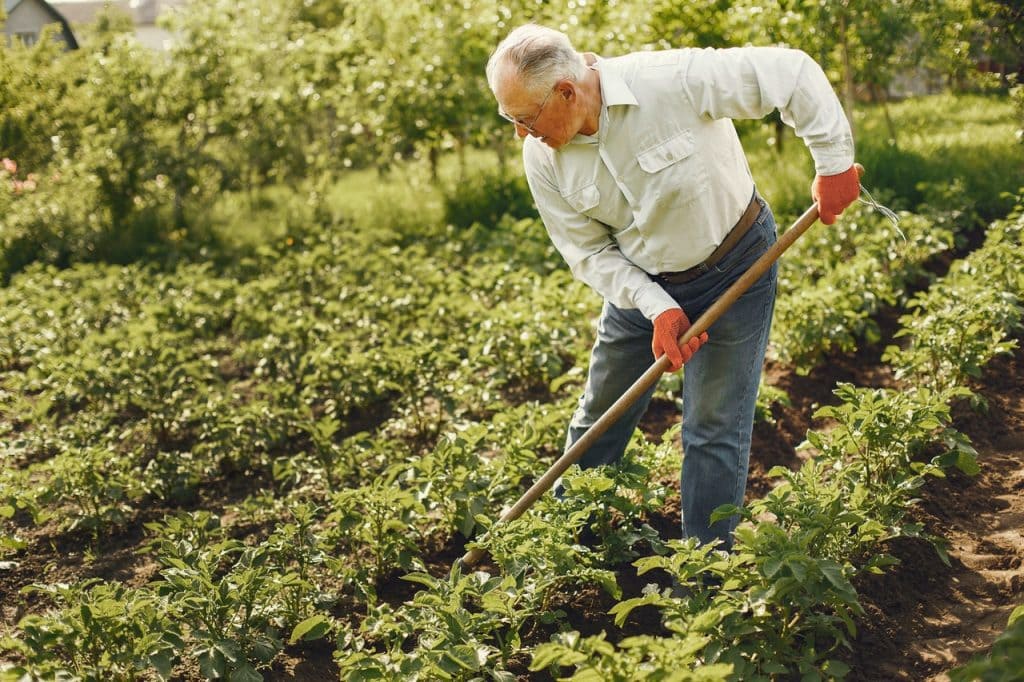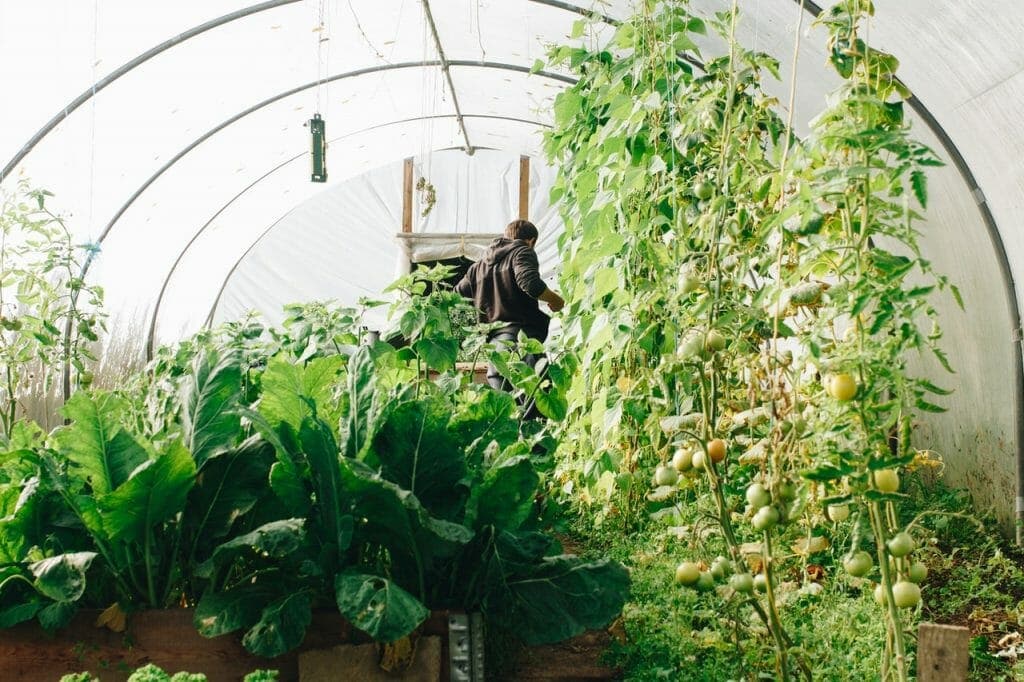Written by Bill Lantz and published on https://backyardables.com/
With an existing garden already in place, you’ll most likely have a spring cleaning routine of your own, yet gardens always have room for improvement.
A beginner gardener may even be overwhelmed with the idea of so much “work” to do, some of it quite physical. The larger the garden, the more lifting, shoveling, digging, bending over, stretching and pushing of the wheelbarrow you will have to do!
Top 10 Tips To Prepare Your Garden For Spring

Believe it or not, when it moves from winter to spring, you need to take some steps to prepare your garden for the spring.
Otherwise, the plants in your garden aren’t going to grow as well as you would expect.
Steps to prepare your garden include organizing your shed, clearing out the weeds and mulch, pruning, preparing the soil, setting up your garden beds, planting, applying mulch, getting rid of pests, and checking your compost area.
Read on to find out why these steps are so important.
Why you should prepare for spring
As you prepared for winter, you took quite a few steps to make sure your fruits and vegetables were taken care of during the cold.
The steps you took during the winter were likely to make sure your plants stayed warm during that cold season.
If you don’t take steps to remove what you did for the winter, you may end up suffocating and killing your plants.
During the spring, your plants will get food from the sun and water from the rain and if you keep the protections you set up during the winter, your plants won’t benefit from these natural occurrences.
Organize your shed
Your shed is going to do quite a bit for you during the spring and summer seasons.
So it would be good to make some preparations for your shed for the coming season.
Sharpen your tools
There is nothing like having some nice sharpened tools for the season.
This includes sharpening the blade on your lawnmower, pruning shears, edger, or anything else with a blade.
You will thank yourself later as you use these tools throughout the season.
So, you can purchase a garden tool sharpener on Amazon, or you could take your tools to the local hardware store and have them sharpen them, or you could pay someone to come out to your house and sharpen your tools.

Expand your collection
It is also a good time to review the last year and figure out what tools would have been nice to have, instead of borrowing them from a friend.
You may also need to replace any tools that may have broken or no longer work over the last year.
So take some time to look over all of your tools and see if there is one that might be too broken to use and list it as one to replace.
It would also be a good time to review any tools you may have borrowed from a friend and need to take back.
It might also be a good time to purchase some tools that you borrowed from others so you won’t have to do any more borrowing.
Replenish supplies
Take stock of the supplies you used over the last year, including fertilizer, plant supports, and tomato cages.
Make sure to have plenty of hand.
Reviewing how much you’ve purchased over the last year will help you see how much you will need for the coming year.
And make sure to purchase accordingly.
Clear out weeds and mulch
To begin the winter, you probably covered your plants with mulch, if you appropriately prepared for the winter.
And that was good for keeping your plants warm.
But during the spring, you won’t need to worry about your plants staying warm.
The sun is going to be doing plenty of that for you.
You are also going to want to allow your plants to grow.
So start by removing the mulch from above the plants.
Once the mulch has been removed, take a look around for weeds.
There may be a weed or two hanging around your plants before the winter and because you covered them up with mulch, they might still be there during the spring.
So take some time to check around your plants and look for weeds and remove them.
Prune
Late winter/early spring is a good time to do some pruning of your plants.
First, the plants are still in a state of dormancy.
It is a good time to prune the branches since the plant hasn’t invested any time in growing the branches.
It can also be a good time to get a look at the shape of the plant while pruning.
You might also want to consider cleaning off your pruning sheers after you finish pruning each plant.
Cleaning the sheers will help to avoid spreading any diseases from one plant to another.
Apply some isopropyl alcohol to a clean rag and wipe down the sheers between each pruning.
You may also want to add a layer of fertilizer to the base of the plant after pruning the tree.
Preparing the soil
During the wintertime, the soil gets compacted down because of the weight of the snow on top of it.
And you don’t want compacted soil when planting your plants.
For example, if you are trying to grow carrots, then they are going to grow in odd shapes if the soil is too hard to work through.
We experienced this first hand

So you are first going to want to loosen up the soil.
If you haven’t planted anything quite yet in the garden, you should be fine to use a rototiller to loosen up the soil.
And you are going to want to give yourself 12 to 14 inches of loosened soil, so really work it.
If you don’t have a rototiller, then you can use a spade or a shovel.
This will take a little more work to get the 12 to 14 inches, but something is better than nothing.
Next, add compost to your soil.
The compost will help to give you the nutrients that it needs to really allow for good growth of the plants.
Set up your garden beds

You might find sometimes that your soil isn’t good enough to grow your plants.
This includes clay-like soil.
In this case, it might put you in a better situation to grow your plants if you have a raised garden bed.
The beginning of spring is the perfect time to create your garden beds.
It’s a time when you won’t have to worry about the snow and can find a good place in your yard to place the garden bed.
Planting
Now when I say planting, I’m not necessarily talking about outside.
There are quite a few plants that you can start inside your house and then eventually transplant them to the outside.
Transplanting is the process of taking a plant from one container and moving it to another.
The following seeds typically transplant well, and can, therefore, be started indoors, according to Clemson Cooperative Extension:
Broccoli
Brussels sprouts
Cabbage
Cauliflower
Eggplant
Kale
Lettuce
Onion
Okra
Pepper
Sweet potato
Tomato
The main advantages of starting your seeds inside include that it increases your garden’s output, decreases pest and weather impact on plants, and you don’t have to do any thinning of the plants.
And you don’t have to just start those plants that you are seeding inside.
There are also plants that you can start outside in the early spring.
Some of these plants include:
- Asparagus
- Lettuce
- Peas
- Rhubarb
- Spinach
- Beets
So you can get these plants started outside in early spring.
Apply mulch
In the winter, the mulch keeps the plant warm.
In the spring, the mulch helps to protect the plants.
You’ve previously removed the mulch from the winter since it has run its life.
If you apply the mulch in between the plants, you increase the chances of keeping the weeds from establishing in your garden.
Since they will have mulch on top of them, the weeds won’t be able to breathe and won’t have access to the sunlight that will help keep them alive.
Get rid of pests
Some pests most likely found their way into your plants during the winter.
So you need to spend some time searching through your plants and get rid of any pests you find.
Any pests you find make sure to destroy them immediately afterwards.
Check your compost area
One of the best things you can do for yourself to save time and money is to have a compost area.
Instead of throwing out old plants, chicken or other animal droppings or mulch, you can put them in your compost area, and then later on in the year, you can use the compost in your garden.
So check the area you are using for keeping your compost.
If you have a raised compost area kept together by wood, check the posts and make sure all the wood is standing sturdy.
If you have your compost in a hole, make sure the hole is cleared out so you can start all over for the new year.
Summary
Waiting time is over.
You probably took the winter to relax since you didn’t have to worry about your garden for a few months.
But now that winter is coming to an end, you have to start making a few preparations to get your garden ready for spring.
This includes removing the winter mulch, getting rid of pests, clean out your shed and sharpen your tools, set up your garden, and apply new mulch.
Original post here https://lineagetreecare.com/tree-service/10-signs-your-tree-needs-pruning/.



